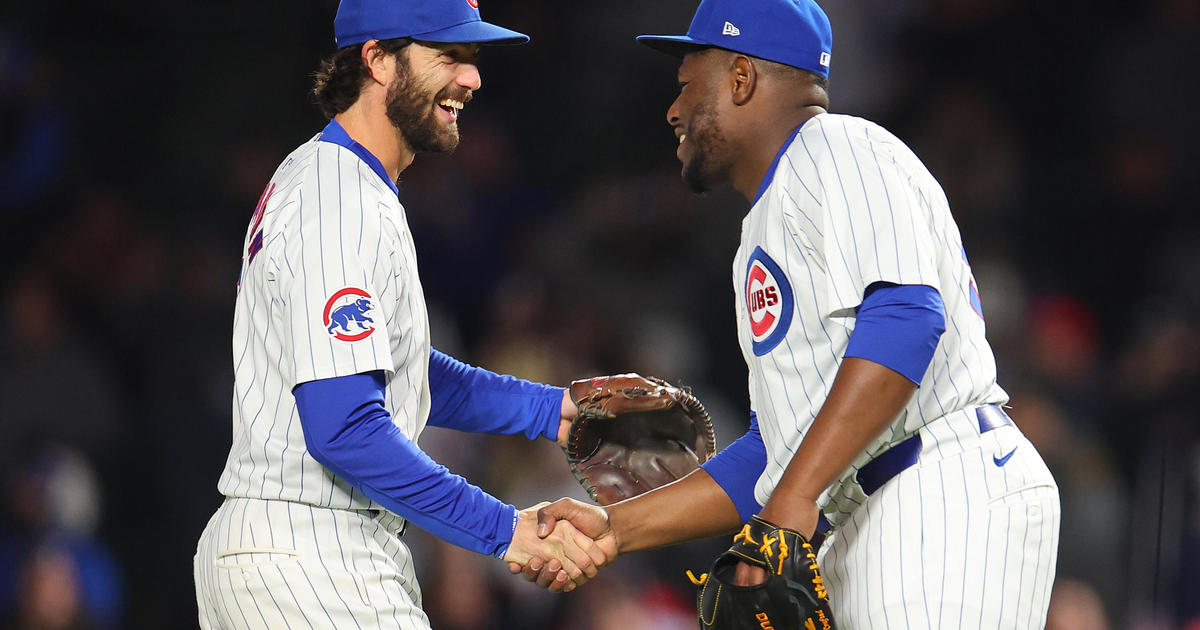Bernstein: Cubs' Theo Epstein Chasing A Baseball Holy Grail
By Dan Bernstein--
CBSChicago.com senior columnist
(CBS) Quality starting pitching is onerously expensive, and it's also unpredictably fragile. Reconciling those unfortunate facts is part of life in Major League Baseball, with teams resigned to spending years of bad money on big contracts while incurring all the risk.
That doesn't mean that everyone accepts the status quo, however. Some of the game's brightest minds are committed to using every resource at their disposal to better understand pitchers' health, in a concentrated effort to maximize value and win more games. Call it the next step in the evolution of management's modern era.
Highly educated executives with Ivy League pedigrees and law degrees, MBAs or both began to show up in front offices around the turn of the century, replacing former players. Now these executives are the industry standard. They're trained to combine quantitative and qualitative analyses to find proprietary advantages in previously unnoticed areas, which when exploited in aggregate can lead to measurable competitive advantages.
Good examples include using on-base percentage, as opposed to batting average, in assessing a player's offensive contribution; matching defensive shifts to hitters' spray charts; building massive computer databases to process scouting information; and gaming antiquated rules regarding free agency, the amateur draft and international signing restrictions. Eventually, either the rest of the teams catch up or baseball closes the loopholes as they're exploited. So the challenge is always for the smart guys to find what's next — that undiscovered source of value lying somewhere others may not be looking.
Cubs president of baseball operations Theo Epstein believes he may be on the path to finding it, and it has everything to do with those pitchers and their mysterious arms.
In a candid and revealing interview Tuesday on 670 The Score in Chicago, Epstein was asked what he thinks is the latest market inefficiency.
"Probably something that relates to sports science and the ability to prevent injuries," he answered. "Predict and prevent injuries."
He described it further in strictly economic terms, saying, "If you could make pitchers ten percent healthier, if you could keep your pitching staff 10 percent healthier, that's worth tens and tens and tens of millions of dollars over the course of the season, in terms of performance and output."
This is pure business, not fundamentally different from an airline maintaining its fleet of planes to ensure better fuel efficiency or a laundromat keeping all the washers and dryers running. It's all about up-time, particularly for the aces logging big innings and being relied upon in the postseason. Epstein wants his team to know more about how to do it.
"Baseball is like the brain, where I think neuroscientists will tell you we understand like three percent of the brain," Epstein said. "I've heard some scientists say it as well — 'This is just the tip of the iceberg of what we understand, so if you can understand .01 percent more, that's a huge breakthrough.' And I feel like baseball's the same way."
The seemingly concurrent rise in the cost of pitching and injuries has led to conflicting theories on prevention. Wildly different approaches to the issue haven't yielded definitive results.
The problem lies in our developmental system. Pitch counts begin as early as age 8, delaying what was a functional selection process. In the old days, kids just pitched and pitched and moved up the ladder. When they got hurt, that was it — they were out of the talent pool with no ligament-replacement surgeries or shoulder arthroscopy to save them. By the time somebody got to the bigs, there was a good chance he was some kind of genetic freak, selecting in naturally as already rubber-armed enough to withstand the workload.
Today those revelations are almost impossible with the safety standards in place, so teams can't know. Some organizations have tried throwing more, others less. But neither philosophy has revealed any truth other than that pitchers of all shapes and sizes keep getting hurt.
That's why Epstein and many of his MLB counterparts are working to crack the code. He revealed that the Cubs already have some proprietary information that's intriguing enough for optimism.
"Pitchers still break," he said, "but yeah, there's the ability to quantify with these Motus sleeves that you wear now for your elbow that's really helpful. It's really the shoulder that's the great mystery, but I think we're starting to zero in on it, understanding the ramifications of a fatigued rotator cuff and what that can mean for the rest of the shoulder."
Epstein also noted that this is happening outside of baseball.
"Sports science, we've been behind as an industry," he said. "European soccer and now American football have been leading the way, and the NBA. So we're playing catch-up a little bit on sports science. It's the application of those same principles into a little bit more complex aerobic environment, I think, that's going to be helpful."
Any new methods to predict injury likelihoods using medical and baseball data, combined with kinetic and physiological awareness, would be immensely significant to the Cubs. But the covert nature of teams upon discovering such advantages might prevent the real worth to the game itself. Teams are going about this privately, without the advantage of an open-sourced forum of ideas to work toward a common goal of keeping all pitchers healthier.
It's a noble and valuable one from MLB on down to high schools and little leagues everywhere, so one hopes any such discovery ultimately becomes public domain instead of just the latest trade secret.
Dan Bernstein is a co-host of 670 The Score's "Boers and Bernstein Show" in afternoon drive. You can follow him on Twitter @dan_bernstein and read more of his columns here.



